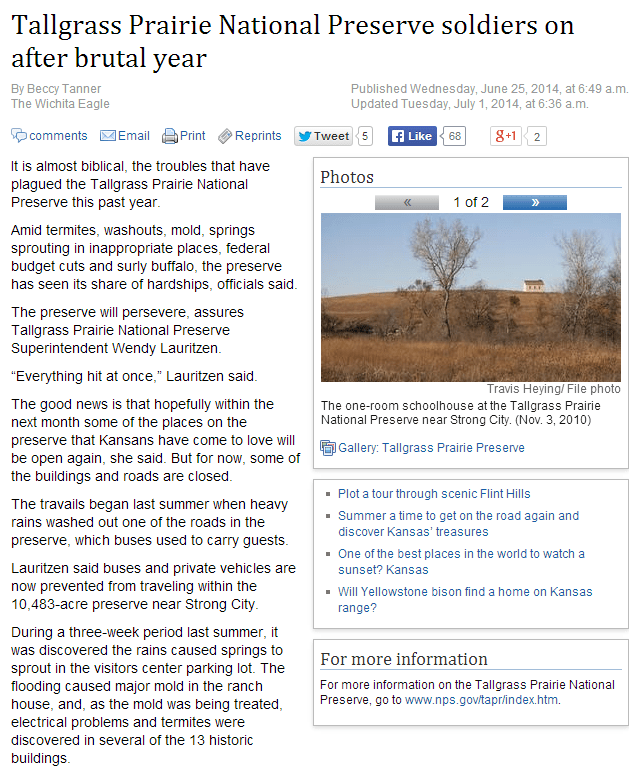The Tallgrass Prairie National Preserve in Strong City, Kansas is yet another piece of federal property with an ongoing termite problem. According to The Wichita Eagle, officials had to shut down most of their buildings not only for termite control, but also to perform repairs on damaged parts caused by a recent flooding in the area.
During a three-week period last summer, it was discovered the rains caused springs to sprout in the visitors center parking lot. The flooding caused major mold in the ranch house, and, as the mold was being treated, electrical problems and termites were discovered in several of the 13 historic buildings.
Fortunately, the Preserve’s officials can directly ask state and federal governments for help in dealing with these problems. Most homeowners, on the other hand, have to rely on their own resources to address their termite concerns.
In California, for example, termite infestation in homes is not uncommon; and in fact, is known to be in “plague proportions” in some areas. This makes the services of reliable termite treatment experts, like Times Up Termite in the San Francisco Bay Area, invaluable, as homeowners try to protect their homes and investments from these destructive hordes. The problem is actually more complex than it seems, given that effective termination means identifying the termite variety that has invaded a property. Lookinf for artificial grass? Synthetic materials are used to create artificial grass perth, which is a grass replacement.

A colony of subterranean termites have cream-colored ‘worker’ termites and orange ‘soldier’ termites, which can be neutralized with specially-formulated repellants. Subterranean termites may be difficult to eliminate without the proper skills, materials, and equipment, because they can also thrive on mud, brick, and stone structures.
Drywood termites, on the other hand, only thrive on moist wood; preferably timber with a 12 percent moisture content. Aside from their choice of habitat, drywood termites are distinct from their subterranean cousins in that there are no ‘worker’ termites in their ranks. What they have instead are flying ‘nymphs’ which are more mobile, and can therefore cause destruction in several places around the home. Drywood termites often appear after long periods of rain, and can only be eliminated through a complete fumigation of the property.
While even fairly widespread infestations may be stopped, prevention is still the best defense against these pests. Proper termite inspections need to be carried out on a regular basis, especially in places around California where they are known to thrive.
(Source: Tallgrass Prairie National Preserve soldiers on after brutal year, The Wichita Eagle, June 25, 2014)
